FPL Formation Guide (update 2025-2026): Best Formations & How to Switch
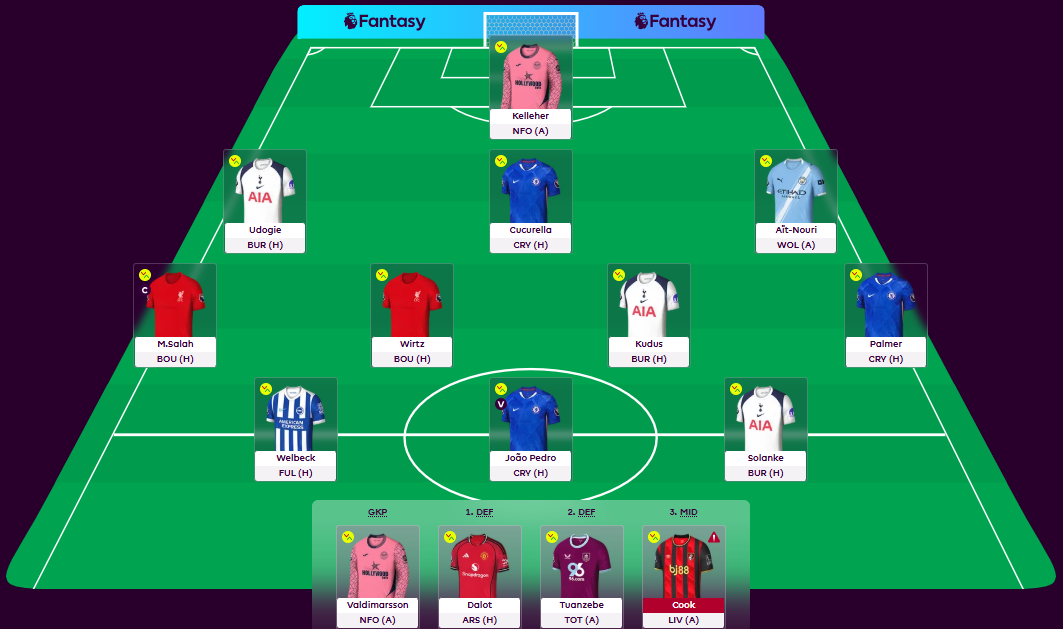
This FPL formation guide gives you a quick framework to pick the right shape before GW1. Choosing the right formation in Fantasy Premier League (FPL) is almost as important as the players you pick. While your initial squad might seem perfect, Premier League dynamics shift quickly—injuries, fixture swings, rotation, and price changes mean the optimal shape of your XI rarely stays still for long. This guide shows you how to change formation in FPL, when it makes sense, and the strategic edge you gain by switching at the right moment.
1. Understanding FPL Formations
Every starting XI must respect these base rules:
| Position | Min | Max |
|---|---|---|
| Goalkeepers | 1 | 1 |
| Defenders | 3 | 5 |
| Midfielders | 3 | 5 |
| Forwards | 1 | 3 |
Popular setups & why they dominate mini‑leagues:
- 3‑4‑3 – maximises attacking slots up front; perfect when mid‑price forwards are hot.
- 3‑5‑2 – loads up on explosive midfielders (Salah, Saka, Palmer) during midfield‑heavy seasons.
- 4‑4‑2 – balanced, cheaper to assemble; useful when premium defenders (Gvardiol, Cucurella) offer double‑digit hauls.
- 4‑3‑3 / 5‑3‑2 – niche, but viable in defensive purple patches or double‑gameweek (DGW) clean‑sheet runs.
Tip: A bench of playing enablers (£4.0–£4.5 m) lets you pivot between any legal formation without taking hits.
2. How to Change Your FPL Formation (Step‑by‑Step)
- Navigate to Pick Team.
- Click the substitution arrow on the player you want to bench.
- Select the bench player you’d like to start. The site/app auto‑rearranges to a valid formation.
- Hit Save Your Team.
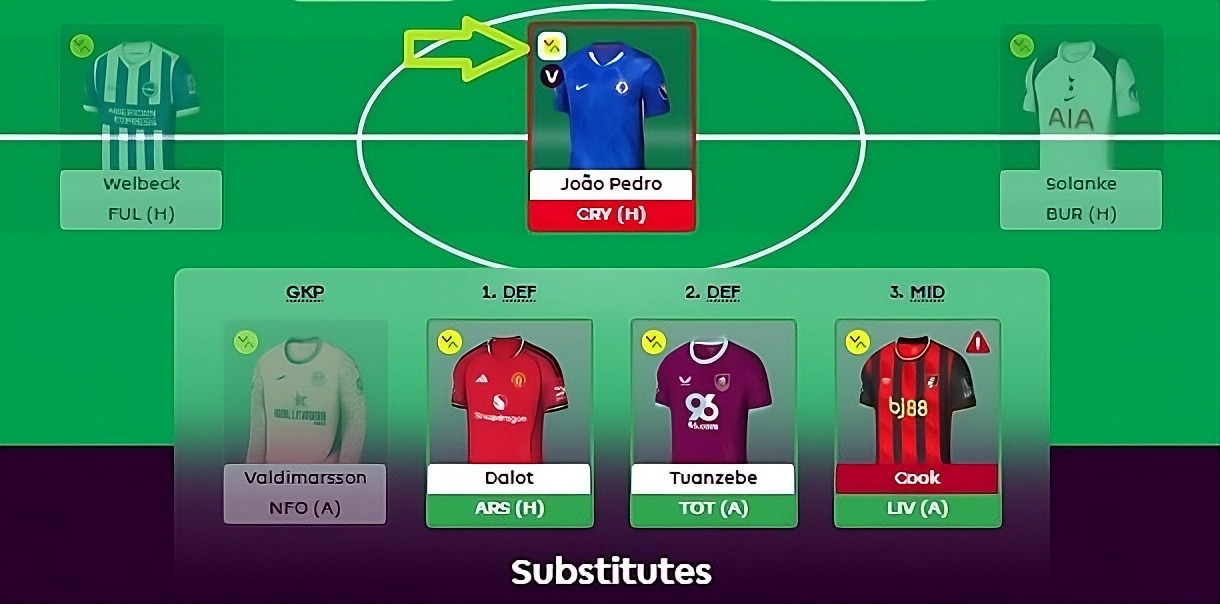
⚠️ Formations can only change before the Gameweek deadline. After kickoff you’re locked in until the next GW.
3. Strategic Reasons to Switch Formation
- Fixture Swings – e.g., when Arsenal’s fixtures soften, doubling in midfield (Ødegaard + Saka) via a 3‑5‑2 can outscore a third forward.
- Injuries & Suspensions – losing a premium striker? Flip to 4‑4‑2 and invest freed cash in a flying full‑back.
- Budget Re‑allocation – liberated funds from downgrading a defender can upgrade a mid to a premium and slide into 3‑5‑2.
- Price Volatility – early‑season bandwagons often cluster in midfield; ride price rises with an extra mid slot.
4. Formation Face‑Off: Pros, Cons & Ideal Player Types
3‑4‑3
Pros: Three strikers maximise haul potential, easier captaincy rotation.
Cons: Bench often thin in defence; risk if a forward is benched IRL.
Ideal picks: Premium + two mid‑price forwards (Haaland + Wood + João Pedro).
3‑5‑2
Pros: Captures midfield bonus/assist ceiling, great for DGWs with midfielder chips.
Cons: Only two forwards—bad if cheap strikers are on fire.
Ideal picks: Five explosive mids (two premiums, three value) + rotating budget forwards.
4‑4‑2
Pros: Cheaper, steadier; defence points are reliable in tight fixture blocks.
Cons: Fewer explosive captaincy options; requires premium wing‑backs to shine.
Ideal picks: Two wing‑backs with set‑pieces, two nailed centre‑backs.
Pro Tips from Our FPL Formation Guide: From my personal experience, a three-defender formation has always been my preferred choice, as it maximizes attacking returns from midfielders and forwards. During the 2024/25 season, defenders struggled significantly to keep clean sheets, and relying solely on their attacking potential simply wasn’t appealing enough. However, with the introduction of Defensive Contribution Points adjustments in the 2025/26 season, defenders might once again become enticing options in the eyes of FPL managers.
5. Season Timeline: When Formation Shifts Win Points
| Phase | Why Switch? | Typical Change |
|---|---|---|
| Pre‑Season (GW1‑4) | Limited data; flexible 3‑4‑3/3‑5‑2 lets you hop bandwagons | Minor tweaks |
| International Break 1 (GW4‑5) | First Wildcard window; injuries show trends | Major overhaul; decide core formation |
| Mid‑Season Fixture Swing (GW14‑19) | World‑class sides rotate for Europe – defenders from “flat‑track” teams shine | 4‑4‑2 surge |
| DGW & BGW Chaos (GW25‑34) | Chips in play; bench boost loves midfield depth | 3‑5‑2 or even 5‑4‑1 |
| Run‑In (GW35‑38) | Chase upside – premium attackers > defenders | Back to 3‑4‑3 |
6. Best Practices for Smooth Formation Changes
- Scout Stats, Not Names – xG, xGI (expected goal involvement) predict future output better than last GW’s points.
- Keep Free Transfers When Possible – FTs lets you fix structure without a hit.
- Protect Team Value – early in the season, ride price rises; later, optimise raw points.
- Check Press‑Conference Tweets – follow @BenDinnery, @FFScout,… for final‑minute live fitness intel.
7. Common FPL Formation Mistakes
- Chasing Yesterday’s Points: Switching to 5‑at‑the‑back after a CS spree often backfires.
- Ignoring Captaincy Routes: Committing to a 3-5-2 formation without a quality forward can leave you struggling to find a reliable captain, especially during tough fixtures or when your midfielders are off form and prone to blanking.
- Overloading the Bench: Expensive subs bench money; aim for ≤ £17 m outside your XI.
8. Frequently Asked Questions
Q1. Can formation changes trigger auto‑subs out of position?
Yes. If your starter misses out, the first bench player who keeps a legal shape comes in—sometimes altering to 3‑5‑2 or 4‑4‑2 automatically.
Q2. Does formation influence bonus‑point allocation?
No, BPS is player‑specific. But formations that field more high‑ceiling players increase odds of bonus returns.
Q3. How early should I plan a formation switch?
At least two GWs ahead—monitor fixtures and price rises so you don’t need ‑4 hits.
Q4. Is 5‑at‑the‑back ever worth it?
Absolutely during defensive purple patches and with high defensive CBIT (Clearance – Block – Interception – Tackle) stats (applicable from the 2025-2026 season) like Tarkowski, Murillo, …. Ensure your wing‑backs carry attacking threat.
Conclusion & Next Steps
Mastering formation flexibility is a season‑long super‑power. By monitoring fixtures, stats and squad depth, you’ll know when to shift shape for an edge over casual managers. Combine your new‑found formation savvy with smart transfers and timely chips—and watch your mini‑league rivals scramble to catch up. Bookmark our FPL formation guide and transform your FPL strategy today.

👉 Subscribe to our weekly FPL email for real‑time formation tips, captaincy picks, and differential alerts!
10. Advanced Formation Hacks & Cheat‑Sheet
Use this quick‑reference table to decide at a glance which shape best fits your squad each Gameweek:
| Scenario | Recommended Formation | Key Movers |
|---|---|---|
| Two premium forwards on fire, budget mids stagnating | 3‑4‑3 | Shift funds up front; downgrade 5th mid ➜ playing 4.5 m DEF |
| Five midfielders averaging ≥ 6 pts/GW | 3‑5‑2 | Upgrade 3rd FWD ➜ 4.5 m enabler; reinvest into mid heavy‑hitters |
| Defence in purple‑patch (3+ CS in 5 GWs) | 4‑4‑2 or 5‑3‑2 | Double up on wing‑backs; captaincy stays on reliable premium |
| Blank GW where strikers have poor fixtures | 4‑5‑1 punt | Bench boost friendly; one talismanic FWD keeps captaincy safe |
Pro Tip – ‘Rolling Switch’: Save 2 FTs, flip to a new formation for a two‑week fixture burst, then roll back without hits.
Bench Boost & Formation Synergy
- Bench Boost thrives on at least four playing defenders in DGWs. Plan a 4‑4‑2 the week before, bank transfers, then turn it into a full 15‑man DGW monster.
- Triple Captain loves a striker‑centric 3‑4‑3 or midfielder‑centric 3‑5‑2 depending on the DGW superstar.
Captaincy Matrix by Formation
| Formation | Primary Captain Tier | Backup Option |
|---|---|---|
| 3‑4‑3 | Premium Forward/Midfielder | Explosive Midfielder |
| 3‑5‑2 | Premium Midfielder | Mid / FW with set‑pieces/on pens |
| 4‑4‑2 | Premium Midfielder | Mid / FW with set‑pieces/on pens |
Using this matrix ensures you’re never formation‑locked into a poor captain when fixtures turn.

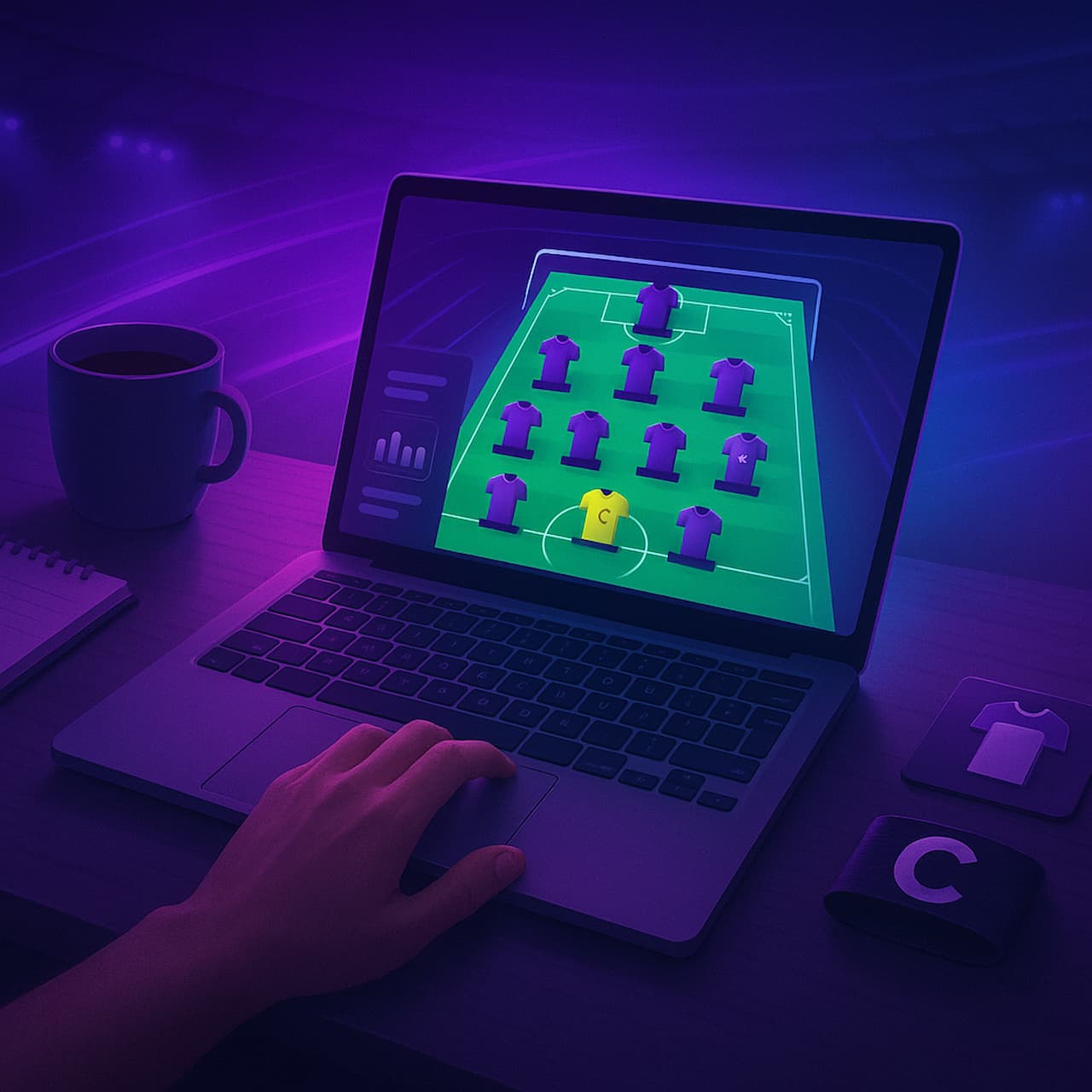
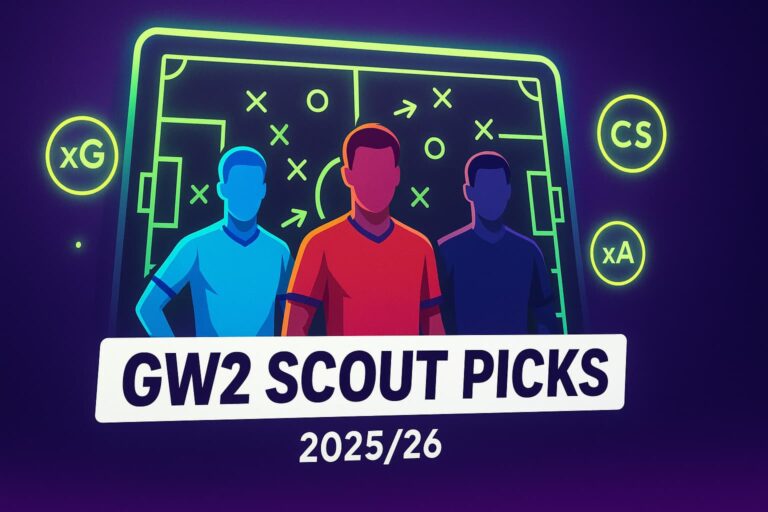

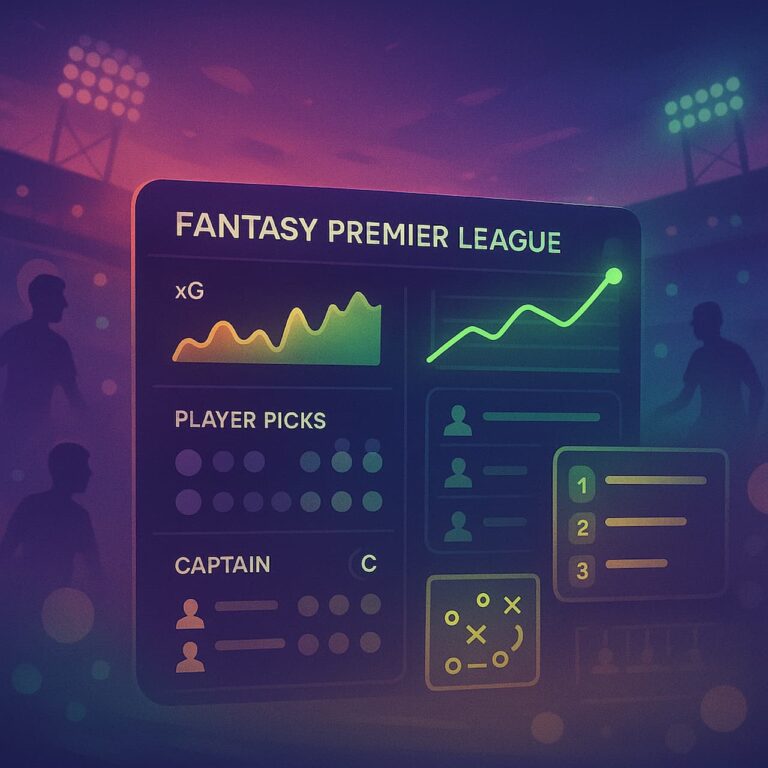
제가 이해하지 못하는 것은 실제로 당신이 지금 얼마나 더 깔끔하게 호감을 얻는지입니다.
당신은 매우 지적입니다. 이 주제에 대해 상당히 다양한
각도에서 저를 믿게 했습니다.
마치 소녀 가가와 관련이 없으면 관여하지 않는 것처럼 보입니다!
당신의 개인적인 글은 대단합니다. 늘 그것을 잘
관리하세요!
Hi to every body, it’s my first visit of this
website; this weblog consists of awesome and genuinely
fine information for readers.